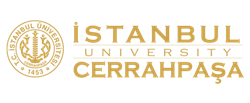AIM: This study was carried out to determine women’s knowledge about lymphedema precautions and their practice status. The sample of this descriptive and correlationally designed study included 107 women who underwent surgery.
METHOD: This descriptive study’s data were collected using a questionnaire form developed by the researcher. The data were structured on a 3-point Likert-type scale. The one-way analysis of variance, correlations, and the Kolmogorov–Smirnov test were used in the statistical analysis.
RESULTS: Three-quarters of the women knew that they should do arm exercises, keep the arm above the heart level while resting, and that blood pressure should not be measured, and jewelry not be worn. However, it was found that the percentage of women who did not know that the arm circumference should be measured at regular intervals or how to evaluate the arm circumference measurements and what to do in case of an injury was the same. It was determined that the precautions that the majority of women took in measuring lymphedema consisted of not measuring blood pressure, not wearing tight jewelry, and wearing an appropriate bra.
CONCLUSION: It is thought that patients should be informed about the development of lymphedema after breast cancer surgery because their compliance with taking the precautions will be important in reducing the incidence, degree, and effects of lymphedema.
Cite this article as: Aydın, A., Gürsoy, A. (2020). Lymphedema information and prevention practices of women after breast cancer surgery. Florence Nightingale Journal of Nursing, 28(3), 350-358.




.png)
.png)